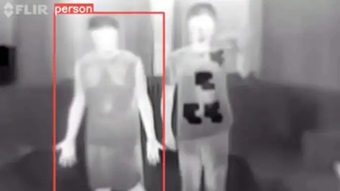A group of graduate students in China have invented an ordinary-looking coat that can apparently “hide the human body” from security cameras monitored by AI (artificial intelligence). Referred to as ‘InvisDefense’, the so-called invisibility cloak can blind the camera during the day with patterns and send unusual heat signals at night to dodge the AI monitoring. The coat, if perfected, could be helpful in countries like China and some Southeast Asian countries where the government widely uses AI-powered surveillance cameras. There’s also a possibility that governments may either ban the tech or improve their existing systems to detect such ‘invisibility cloaks’.
As reported by the Chinese publication, South China Morning Post, the InvisDefense coat won first prize in a creative competition on November 27, sponsored by Huawei Technologies Co as part of the China Postgraduate Innovation and Practice Competitions.
The report explains that the InvisDefense coat can interfere with the recognition algorithm of machine vision with a camouflage pattern on its surface during the day. At night, the coat messes with the temperature-detecting module to confuse the infrared camera.
Speaking about the InvisDefense coat, Wei Hui, a PhD student responsible for the core algorithm, told the publication that the trickiest part was the camouflage pattern. “Traditionally, researchers used bright images to interfere with machine vision and it did work. But it stands out to human eyes, making the user even more conspicuous,” Wei said.
The team seemingly carried out hundreds of tests before coming up with the technology. One of the biggest advantages of the invisibility cloak is its price. The creators say printing a pattern on the surface is relatively cheap, and only four temperature control modules are needed to blind the infrared camera. Its initial cost is quoted at CNY 500 (roughly Rs 6,000).
The creators claim that the InvisDefense cloak could be used in anti-drone combat or human-machine confrontation on the battlefield, although the technology needs improvements








